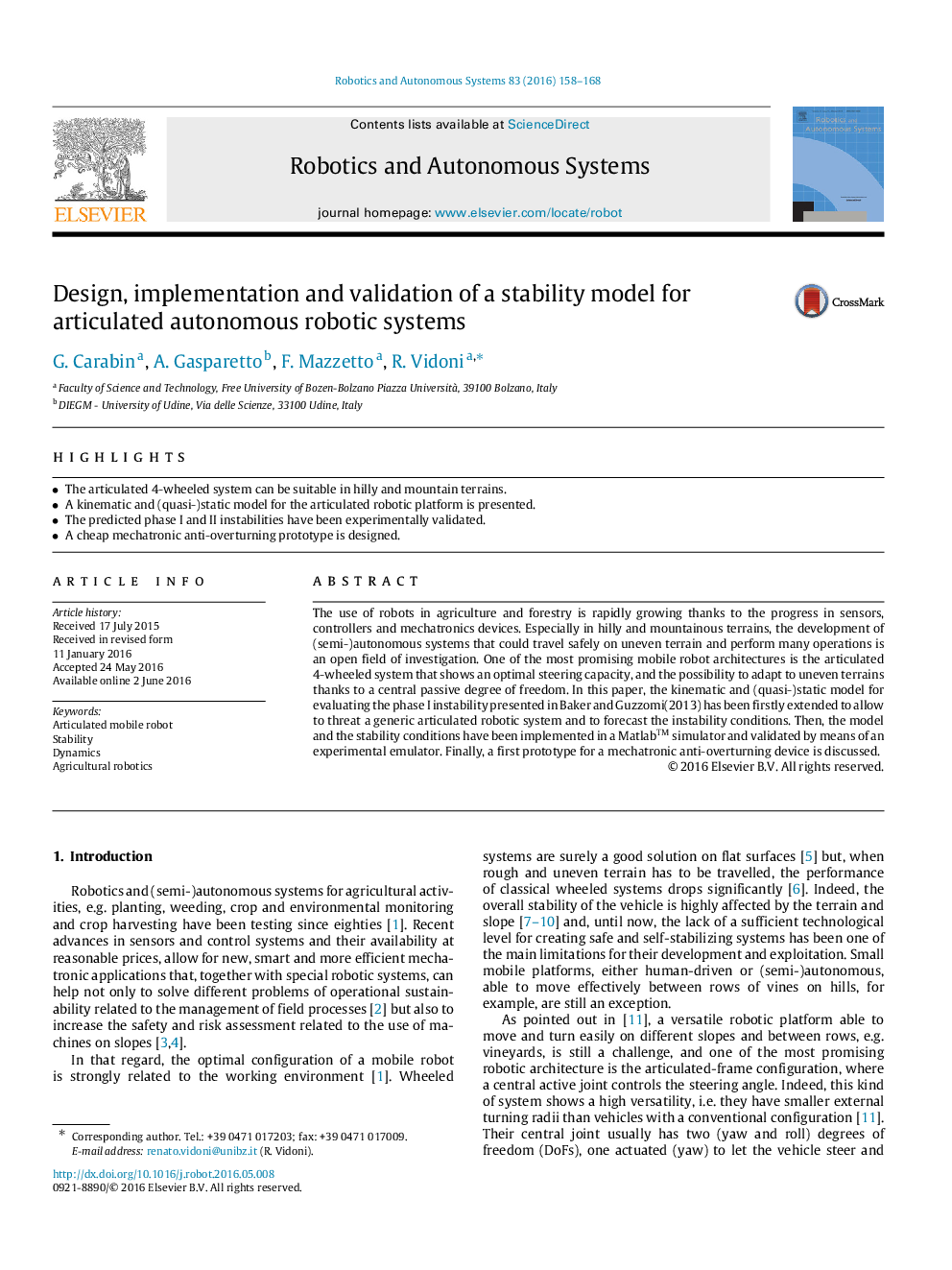| Article ID | Journal | Published Year | Pages | File Type |
|---|---|---|---|---|
| 411911 | Robotics and Autonomous Systems | 2016 | 11 Pages |
•The articulated 4-wheeled system can be suitable in hilly and mountain terrains.•A kinematic and (quasi-)static model for the articulated robotic platform is presented.•The predicted phase I and II instabilities have been experimentally validated.•A cheap mechatronic anti-overturning prototype is designed.
The use of robots in agriculture and forestry is rapidly growing thanks to the progress in sensors, controllers and mechatronics devices. Especially in hilly and mountainous terrains, the development of (semi-)autonomous systems that could travel safely on uneven terrain and perform many operations is an open field of investigation. One of the most promising mobile robot architectures is the articulated 4-wheeled system that shows an optimal steering capacity, and the possibility to adapt to uneven terrains thanks to a central passive degree of freedom. In this paper, the kinematic and (quasi-)static model for evaluating the phase I instability presented in Baker and Guzzomi(2013) has been firstly extended to allow to threat a generic articulated robotic system and to forecast the instability conditions. Then, the model and the stability conditions have been implemented in a Matlab™ simulator and validated by means of an experimental emulator. Finally, a first prototype for a mechatronic anti-overturning device is discussed.
